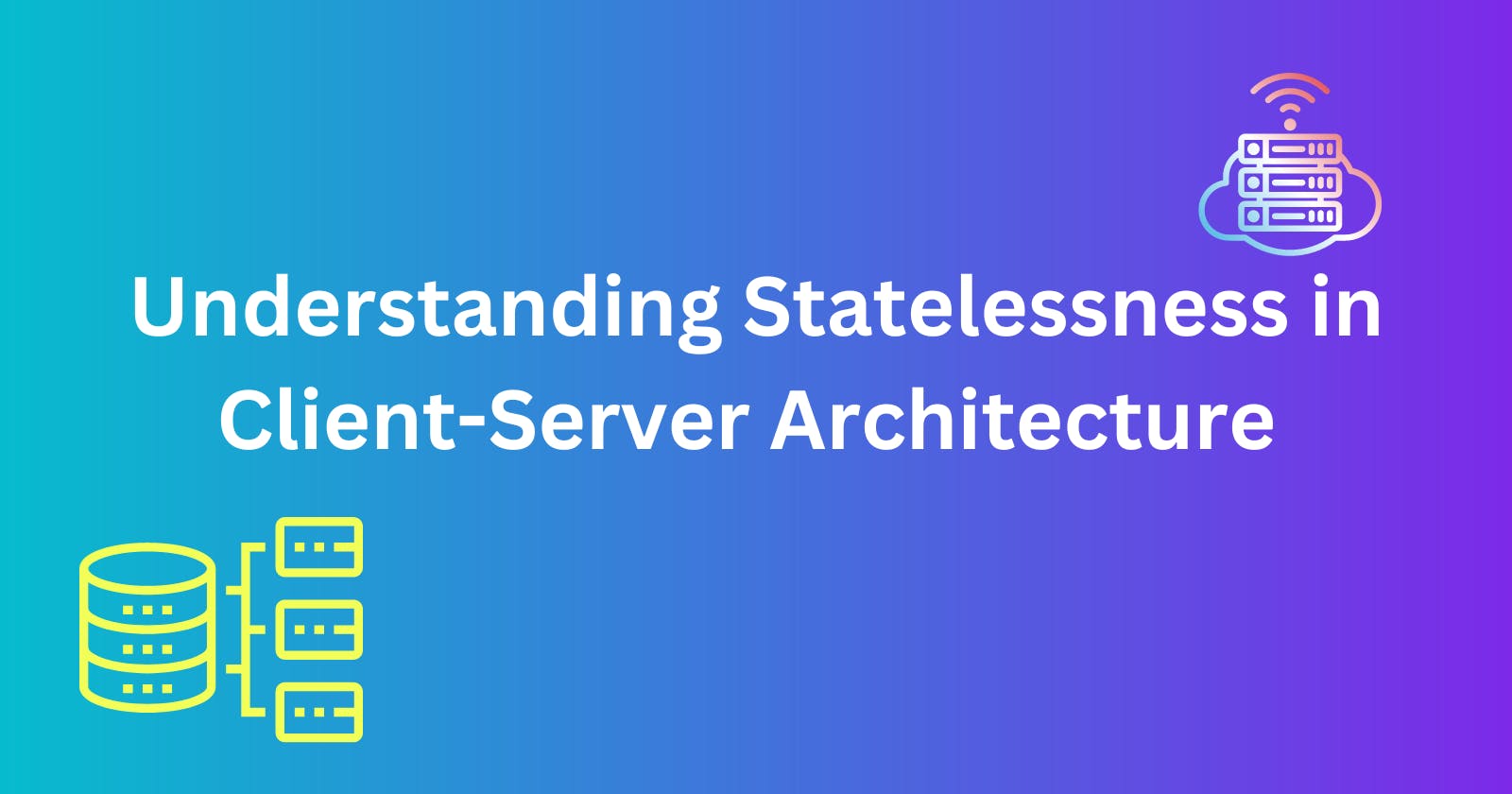The client-server architecture is the foundational system architecture that enables web applications to function the way they do.
The Client-side is the front-end or User and the Server-side is the Backend comprising the database, APIs, and web server.
When addressing client-server interactions, the concept of "state" makes a difference in the "request" and "response" operations.
I previously addressed stateful architecture and in this article, we will be focusing on the stateless side of things.
What is Statelessness in the Client-server?
Statelessness refers to the non-caching of user sessions when clients interact with the server.
The server-side does not save user details no matter how often that same request is made.
An example of statelessness is Incognito mode in your web browser.
Your search history, passwords, and cookies aren't cached as the server does not save details of your session and if you get logged out during a session, you would have to start from scratch.
Without the server saving user-data, memory is freed up and request-response cycles are faster.
Workflow of a stateless architecture

Stateless architectures are based on a request-response model, where the client sends a request to the server and the server responds with the requested data. In this model, the client is responsible for initiating the request and the server is responsible for responding to it. The server does not store any information about the client or the request.
The opposite would be the case in a Stateful architecture where user sessions are stored and client data can be restored in the event of a timeout during sessions.
Use Cases and Benefits of Stateless Architecture
Stateless architectures offer many benefits, including scalability, flexibility, and security. These benefits are widely used in web applications, microservices, automated testing, and monitoring.
Web Applications
Scalability and security benefits due to the server not needing to store any information about the client or their requests.
Can handle more requests more efficiently, allowing for faster performance.
More secure, as the server is not vulnerable to malicious attacks targeting stored information.
Microservices
Scalability and flexibility due to each service being responsible for a specific task and being independent of the other services.
Any service can be scaled up or down independently from the other services.
More secure and can handle more requests more efficiently.
Automated Testing
Faster performance and better scalability due to being more efficient than manual testing.
The server does not need to store any information about the client or their requests.
Help to ensure more secure applications, as the server is not vulnerable to malicious attacks targeting stored information.
Monitoring
Better scalability and performance due to the server not needing to store any information about the client or their requests.
Better security, as the server, can detect any malicious activity or unexpected behavior that could compromise the application or service.
